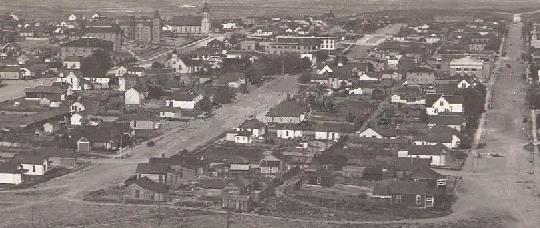
Rawlins, Wyo., 1920., looking East
In the upper left corner of the photo are
the Masonic Temple, the Courthouse, and school, see
previous page. The streets in the photo are from right to left, Cedar, Buffalo and Pine.
Beyond the school is St. Joseph's Roman Catholic Church at the corner of Third and Pine.
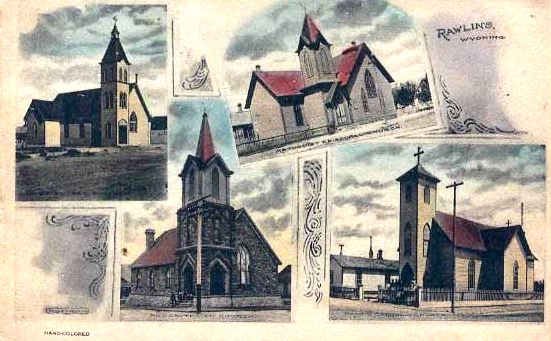
Rawlins Churches, undated. Churches in
clockwise order: St. Thomas Episcopal, Methodist, Catholic, and Presbyterian.
St. Joseph's traces its beginnings to 1871 when a small church building
was constructed. The church, however, did not have its own pastor, there being only
one Catholic priest in the entire territory, the Reverend William Kelly of
Cheyenne. The Reverend Kelly would occasionly come to Rawlins to say mass. In
1879 the church was assigned its first resident pastor, the Reverend Michael F.
Cassidy. In 1916, the building in the upper photo was dedicated. In 1933, the building was
gutted by a fire and the congregation had to meet in the Elks Lodge on Cedar
Street, depicted on the previous page, until the building could be restored.
Across the street from the Masonic Temple is St. Thomas Episcopal Church.
In the 1920's the local Rotary Club, as a fund raiser, arranged a boxing match between the
pastor of the Presbyterian Church and the rector of the Episcopal Church. The writer's sources do not indicate who won.

Cedar Street, 1921, looking East
The first building on the left is the Post Office constructed in 1910. It now
houses the City Hall. The building in the center of the photo is the Miller Block named after
Isaac C. Miller. See also next photo. Miller, originally from Denmark, received his start in business as a clerk in a
store. Miller was elected as sheriff in 1880 and served for four years. In
1886 he was elected as the first mayor of Rawlins when the town was incorporated.
Allegedly, at the time of each election, Miller had not yet been naturalized. If so,
it would not have been the only time the citizens of Carbon County elected to
high office someone who was not yet an American citizen. In the election of 1892,
Harry Albert Chapman, a Democrat and a British subject from South Australia, was elected
to the House of Representatives representing Carbon and Natrona Counties not withstanding that he had not yet been
naturalized. In the initial cavassing of the ballots Chapman received 822 votes. Two members of the local
canvassing board dissented to the disallowance of the votes cast from the
Hanna Precinct. If the Hanna votes were allowed Chapman would win with 960
votes. In a lawsuit decided by the Wyoming Supreme Court, the Hanna votes
were allowed and, thus, in January, 1893, Chapman and another Democrat,
Samuel B. Bennett, were declared winners. [Writer's note, Chapman was naturalized before he
assumed his seat.] Nor was the 1892 election the only time
that ballots cast in Hanna were the subject of litigation. In a subsequent election the
issue of whether miners from Finland who had been naturalized but could not read the
Wyoming Constitution in English was raised. The votes were ultimately allowed since
the voters could read the Constitution when translated into Finnish.
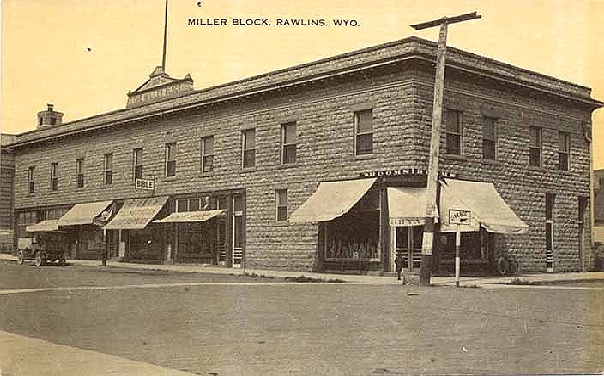
Miller Block, 1920's
As indicated by the photos on this page, Cedar Street over a forty-year period
hardly changed at all.
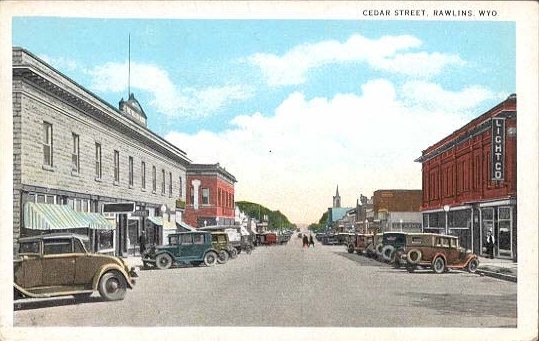
Cedar Street, approx. 1930, Rawlins
The church at the end of the
street is the Victory Baptist Church. In addition to being
mayor, Miller was a founder, along with former governor John Eugene Osborne, of the
Rawlins State Bank. In 1900, the bank received a federal charter and
became the Rawlins National Bank.
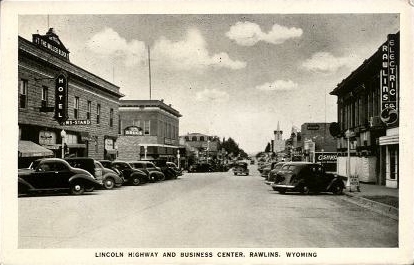 Cedar Street, 1939
Cedar Street, 1939 Miller served as
president of the bank and president of the Rawlins Electric Light and Fuel Company, across
the street from the Miller Block. The Bank was one of the first to have
a woman director, Julia Ferris. Ferris, widow of George Ferris, was elected
to the board of directors in 1904. George Ferris came to Wyoming following the Civil War.
In addition to developing the
hotel pictured on the previous page, Ferris was involved in
mining, see Rudafeha Mine and sheepherding. He was killed returning to
Rawlins from
his mines when
his team of horses ran away.
At the time of Ferris' death, plans
had been made for the construction of his residence at 607 W. Maple.
The plans were carried out by his widow in 1903, using plans from George Franklin Barber of
Knoxville, Tennessee. Barber was noted before the turn of the century for mail order
designs for elaborate Queen Ann style houses. Plans could then be modified by
Barber who could also supply the millwork by rail.
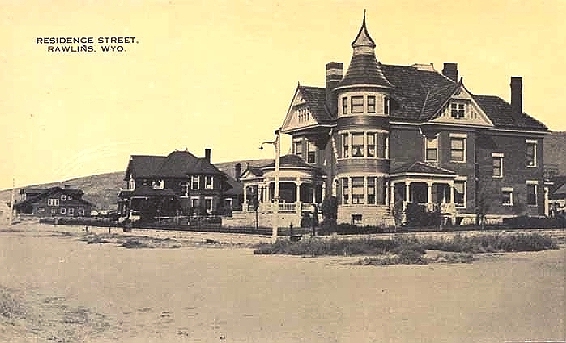
Ferris House, 607 W. Maple,
approx. 1904.
Following Mrs. Ferris' death in 1931, the mansion declined
over the years being turned into apartments. The house is allegedly haunted by
the ghost of Mrs. Ferris' seven-year old son Cecil who was accidently shot by
one of his brothers who was playing with a loaded pistol. The house has now been restored and was recently featured on a cable television
program, Restore America, as were homes in Douglas and Wilson. Former governor Osborne also served as
president of the bank. Rawlins Electric Co. later became a part of Pacific Power. See 1960 photo below.
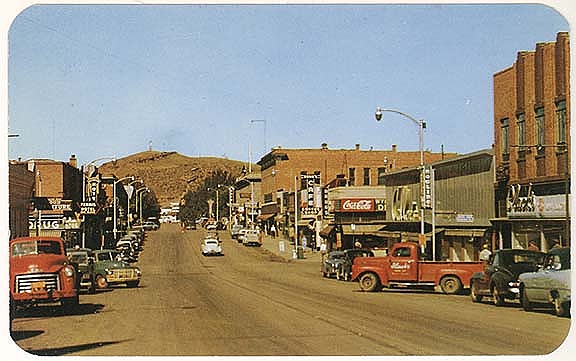
Cedar Street looking west, Rawlins, approx. 1950
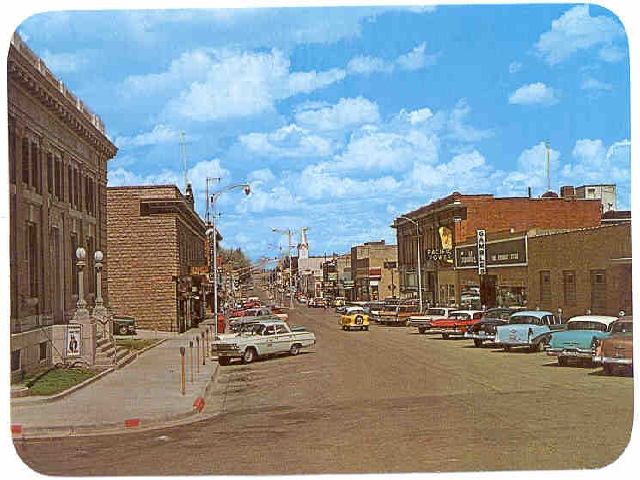
Cedar Street looking east, Rawlins, 1960
|